A survival fishing rod or pole is an important part of a long term wilderness survival pack. Yes, you could make a fishing rod in the field, but it wouldn’t be as easy to use or effective. The less people are in your tribe, the more you need to use technology to compensate for this.
There are two systems of catching food: passive and active. Passive is setting traps, or leaving a line and hook in the water waiting for a fish to bite. I believe that focusing in passive systems is the key to success, but I also believe in having redundant and diverse ways of catching fish. Using a survival fishing rod is like having a survival bow for small game hunting.
Having traps is great, but having a survival bow can allow you to take advantage of hunting a different animal that you might have not been targeting with your trap. In other words I think that it’s best to use a combination of passive and active ways of gathering food for subsistence. For instance, bait your traps in the morning, and go fishing throughout the day.
Using a survival fishing rod is also a great way of catching fish when travelling.
My partner and I only brought one fishing rod for our survival expedition. I thought that focusing on passive systems was the way to go and that the rod was disposable.
The fact is that using a fishing rod for subsistence is a bit tricky. We lost many many hooks that got snagged at the bottom of the rivers. Having more hooks, line, and using bobbers would have been a good way of compensating for this.
I also think that many fish that we hooked were too big for the 6lb mono line, so they would end up breaking it. It might be possible that they bit the line so having leaders was important as well.
This is why survival fishing is way different to recreational fishing. Loosing a hook was always very unfortunate. To the point where we would stop fishing for fear of loosing another one, when we had lost many hooks in a small period of time.
Another thing that surprised me was that in the mornings in Fall when the temperature was very close to the freezing point, our mono line would break. So having braided line is the way to go if you might encounter really cold temperatures.
After doing our survival expedition, I think we should have brought two fishing rods instead of one. I was confused by my desire to survive using mostly sustainable methods, made from local materials, but now I know that that is only feasible when you have a bigger group size.
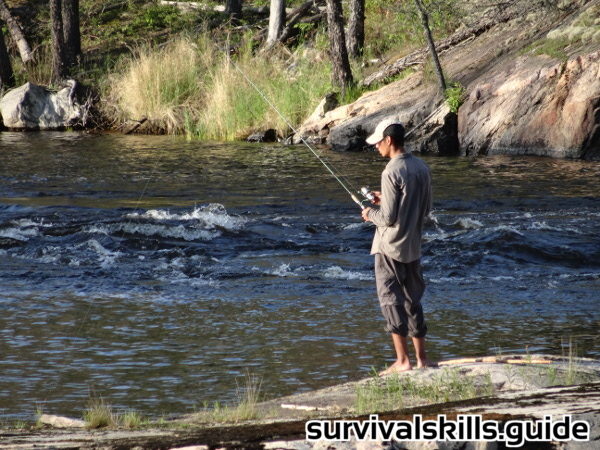
I’m grabbing the rod that way because we shared it
Our rod broke a few times, but we repaired it with epoxy and braided line. We lost many expensive lures, sometimes because we used no leader (dumb move) and other reasons. I have to say that having a few good lures is a great way of getting the ball running. As soon as we got a fish, gathering bait was easier; and with more bait, we caught more fish.
We left fish parts overnight by the shore to catch bait. The next morning we would find many leeches eating the rests of fish, so we just collected them; we checked throughout the day to collect more leeches as they came. We also used fish eyes, belly skin, fish meat, and other fish parts as bait. The best bait we used was small frogs, it was a bit sad to see the frogs suffer, but we were hungry.
Catching bait was a daily chore and one that often limited our ability to catch fish. I improvised a minnow trap with some netting, but it didn’t work. Making a minnow trap with a plastic bottle and using bread (if you have rations) or fish meat as bait is something I would recommend. Leeches worked great for us, so we didn’t focus on minnows that much.
To land or retrieve the fish I made a spruce roots net, it was very heavy and cumbersome. I wanted a net to use for our trip back to civilization that was easy to transport so I made one with braided line and inner strands of paracord.
Bringing the net portion of a landing net to make one in the field is something I would absolutely recommend. When you are chronically hungry, there is nothing worst than hooking a fish and then having it escape just as you are about to grab it.
Survival Fishing Rod: Things to Consider
- Bobbers are very important when fishing for subsistence because they help avoid getting your hook snagged at the bottom. Which could mean losing a hook and line.
- Leaders are a must because you can’t afford to lose your hooks.
- Braided line works in the cold and is more versatile than mono. Your line should have a higher breaking point than what you would use for recreation.
- High quality lures are great when you can’t find any bait, or you have ran out of it.
- Bringing line or a ready made net to make a retrieving net in the field is a good idea.
Choosing a survival fishing rod
There are a few compact fishing rods in the market that would be a good survival fishing pole:
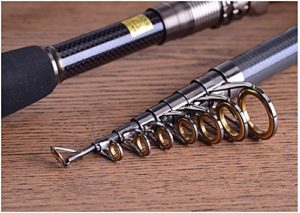
Telescopic Fishing Rods
You might want to try an ultralight collapsible rod for portability. Going for a longer pole with more sections than what you need allows you to keep using it if the last section breaks. The collapsible mechanism does introduce weak points, so reliability might be an issue.
Ice Fishing Rods
These rods are very compact, simple and sturdy. An ice fishing rod would be one of the best options as a survival fishing rod. A rod at least 30 inches long should work for medium fish.
Backpacking Rods
An Emmrod fishing pole is the best survival fishing rod due to its durability and reliability. It has a very simple design that makes it compact, yet sturdy. It is the fishing rod I would take on a survival expedition.
Survival Fishing Rod Wrap-up
A fishing rod is a great asset to have in a long term wilderness scenario, and I would definitely pack it in a long term pack. It has it’s disadvantages, but they can be managed and planned for.

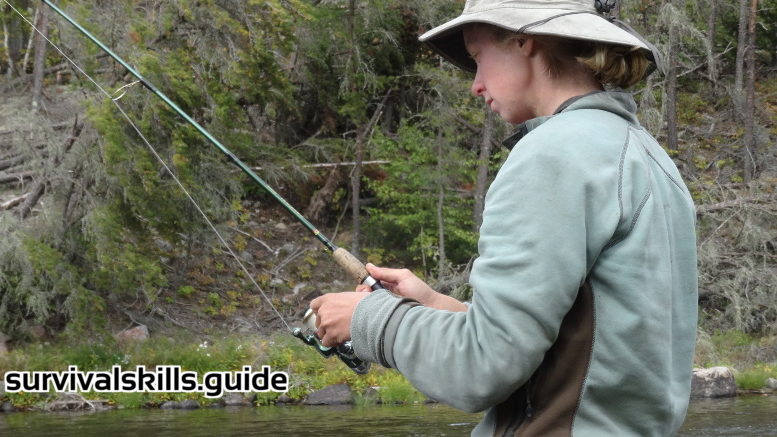
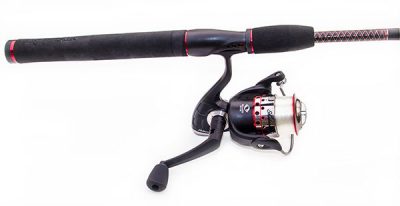
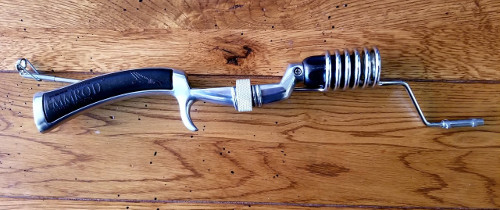
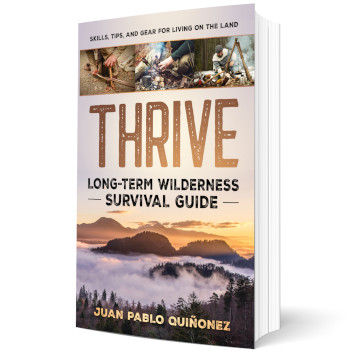
When we went camping in the mountains, we found we often had problems accessing the shoreline because of fallen snags / rock rip rap that snagged fishing tackle. It WAS frustrating – lures would be lost very easily, some on their very first cast.
We thought of wading, but were afraid of materials underwater that could cause damage to our legs – feet. Did you have the same issues when you out there as well ? Ours was very short term (1 week), staying out there as long as you did is very impressive !
Checking out the local pawn shops, I noticed some ‘cut down’ (likely broken then fixed) fiberglass fishing rods that are approximately 3 feet long. Not quite Emrod short, but much shorter than the standard lengths and they are very tough. Make a good back pack rod I think, they are spin cast design, it too very compact simple reels that work well.